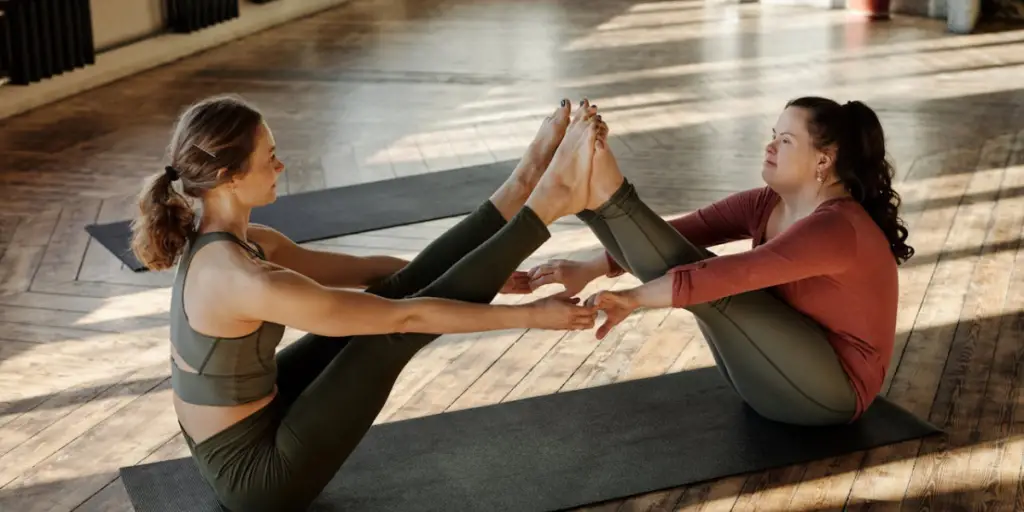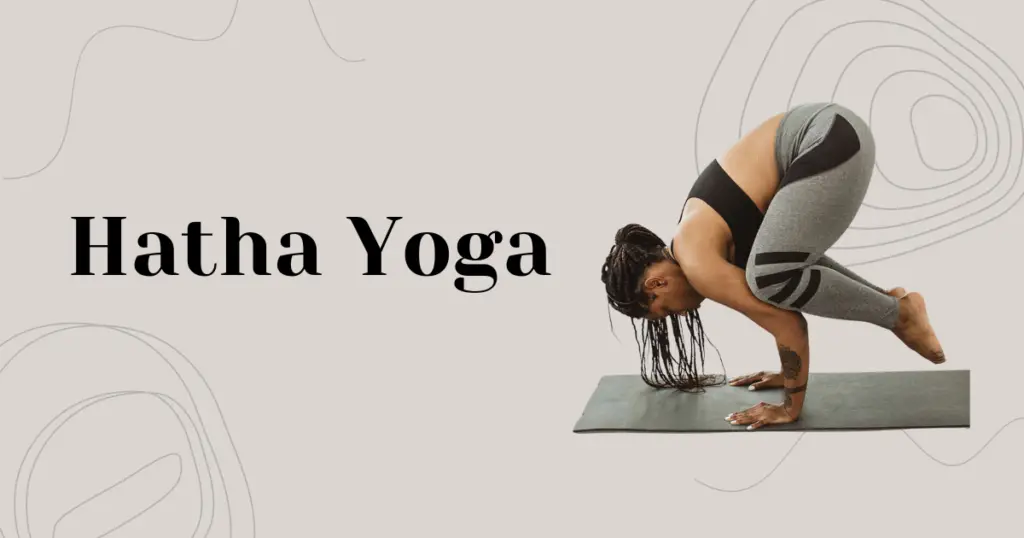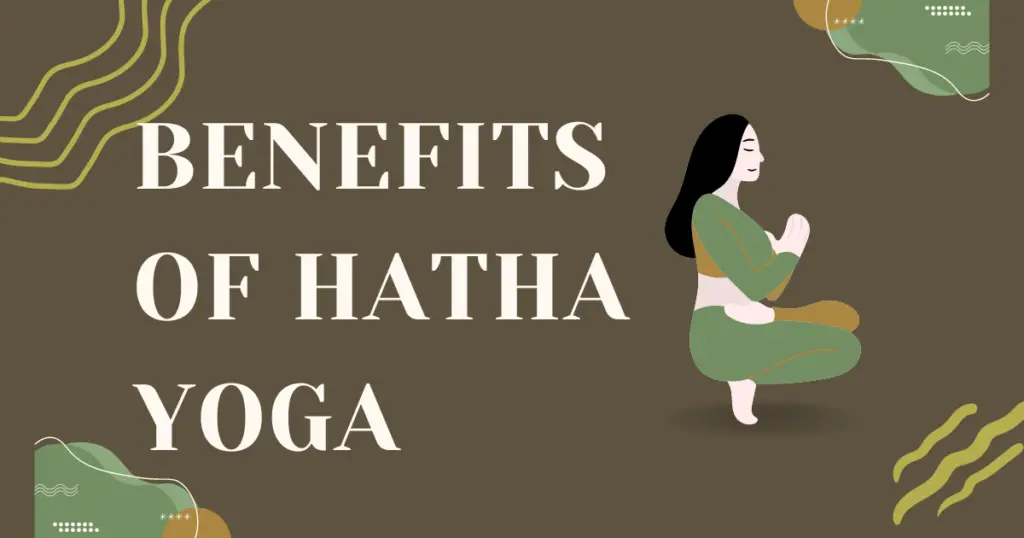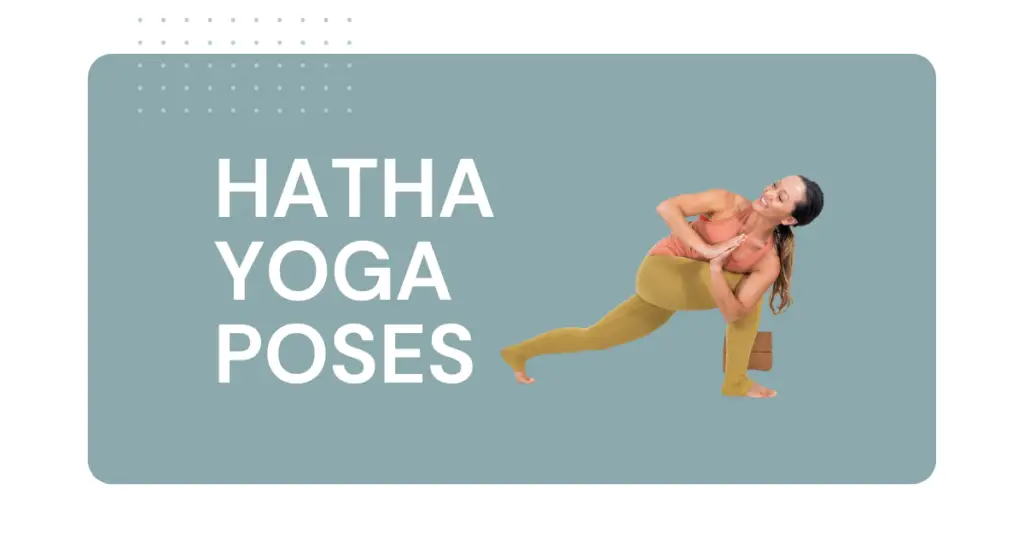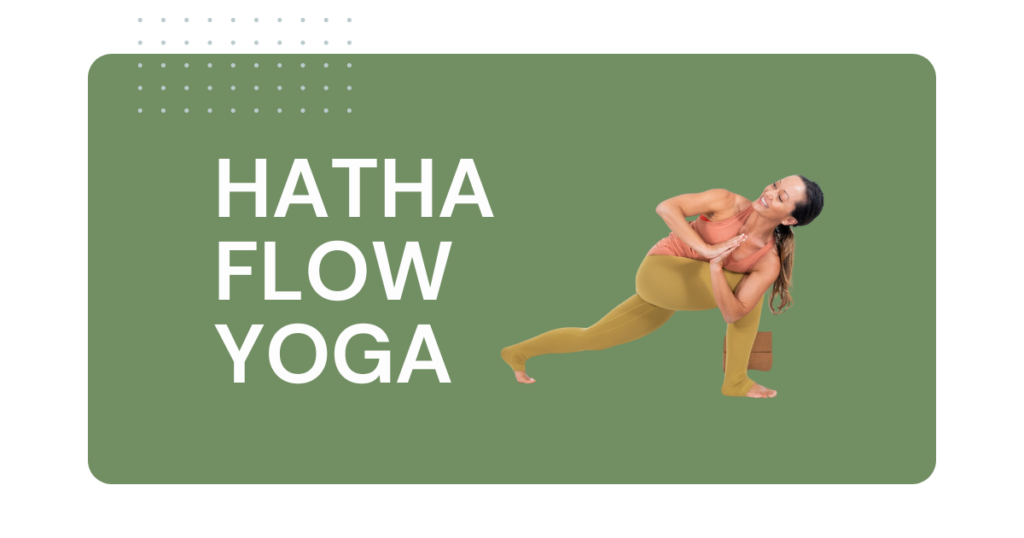
Introduction
For centuries, the ancient practice of yoga has been a guiding light for physical, mental, and spiritual well-being. Among its many derived styles and disciplines, two forms have gained widespread popularity yet remain commonly misunderstood – Hatha yoga vs Yin yoga. While sharing some fundamental principles, these practices are distinct in their intentions, methods, and benefits.
This article aims to demystify the core distinctions between Hatha yoga and Yin yoga. By exploring their origins, philosophies, and unique approaches, you’ll gain a deeper understanding of which style aligns best with your individual needs and goals on your yogic journey. So let’s dive in and unravel the nuances of these restorative yet powerful practices.
Hatha Yoga Origins & Principles
Hatha yoga has its roots in an ancient system that dates back to the 15th century in India. The term “Hatha” is derived from the Sanskrit words “ha,” meaning sun, and “tha,” meaning moon, symbolizing the harmonious balance between opposing energies within the body and mind.
At its core, Hatha yoga is a holistic approach that combines physical postures (asanas), breath control exercises (pranayama), and meditation. Its primary goals are:
The physical postures, or asanas, play a crucial role in Hatha yoga. These postures are designed to promote flexibility, strength, and balance while aligning the body, breath, and mind. Pranayama, or breath control techniques, are also an integral part of the practice, as they are believed to regulate the flow of prana (life force energy) within the body.
Table of Contents
Yin Yoga Background & Philosophy
In contrast to the more active and yang nature of Hatha yoga, Yin yoga is a slower and more passive practice deeply rooted in the ancient Taoist principles of China. The word “yin” represents the feminine, cooling, and introspective aspects of life, emphasizing surrender, stillness, and acceptance.
Yin yoga is designed to target the deeper connective tissues of the body, such as the fascia, ligaments, and joints, which are not as effectively targeted in more dynamic styles of yoga. By holding postures for extended periods, typically between 3 to 5 minutes or longer, the practice aims to create space and flexibility in these often neglected areas.
Beyond the physical aspects, Yin yoga is deeply philosophical and introspective. It encourages practitioners to embrace the principles of surrender and letting go, cultivating a sense of inner stillness and quieting the constant chatter of the mind. This internal focus can lead to greater self-awareness, emotional balance, and a deeper connection with one’s true nature.
Key Differences Between Hatha yoga vs Yin Yoga
While both Hatha yoga and Yin yoga are rooted in ancient traditions and share some commonalities, they differ significantly in their approaches, intentions, and overall experiences. Here are some of the key distinctions:
Intention/Goals
Hatha yoga aims to create balance and harmony within the physical, mental, and spiritual realms through a dynamic practice of postures, breathwork, and meditation. The goal is to cultivate strength, flexibility, and concentration while purifying the body and mind.
Yin yoga, on the other hand, is focused on targeting the deeper connective tissues and promoting stillness, introspection, and surrender. The primary intention is to release physical and emotional tension, increase mobility in the joints and fascia, and cultivate a deeper sense of presence and awareness.
Muscular Engagement
In Hatha yoga, there is a significant emphasis on muscular engagement and control. Postures are held with muscular effort, and the practice involves transitioning between poses in a flowing, dynamic manner.
Yin yoga takes a more passive approach, with postures being held for an extended time with little to no muscular engagement. The body is supported by props, and the practitioner is encouraged to relax into the pose, allowing gravity to create the stretch.
Poses and Sequencing
Hatha yoga sequences often include a wide range of standing, seated, and inverted postures, designed to work various muscle groups and promote overall flexibility and strength.
Yin yoga primarily focuses on seated or reclined postures that target specific areas of the body, such as the hips, spine, and lower body. The sequences are designed to apply moderate stress to the connective tissues, allowing for a deeper release over time.
Pacing and Hold Times
Hatha yoga classes typically involve a continuous flow of postures, with each pose being held for a shorter duration, often ranging from a few breaths to a minute or two.
In contrast, Yin yoga is characterized by longer hold times, with poses being held for several minutes at a time. This slower pacing allows for a deeper release and relaxation within the targeted areas.
Breath Work
Pranayama, or breath control techniques, plays a significant role in Hatha yoga. Specific breathing exercises are often incorporated into the practice to cultivate greater awareness, energy, and clarity.
While breath awareness is encouraged in Yin yoga, there is less emphasis on controlled breathing techniques. The focus is more on allowing the breath to flow naturally and using it as an anchor for the present moment.
Temperature/Environment
Hatha yoga classes are often practiced in a room with a comfortable, moderate temperature, as the physical exertion can lead to increased body heat.
Yin yoga, on the other hand, is typically practiced in a cooler environment, as the longer hold times and passive nature of the practice can cause the body to generate less internal heat.
Spiritual/Philosophical Underpinnings
While both practices have spiritual roots, their underlying philosophies differ. Hatha yoga is rooted in the Hindu tradition, with a focus on achieving balance, purification, and ultimately, transcendence or enlightenment.
Yin yoga draws from the Taoist principles of yin and yang, emphasizing the complementary forces of receptivity and surrender. The practice encourages a deeper connection with one’s inner stillness and a letting go of mental and emotional resistance.
These key differences between Hatha yoga and Yin yoga highlight the unique approaches and experiences offered by each practice. Depending on an individual’s goals, preferences, and physical abilities, one style may resonate more strongly than the other. However, many practitioners find value in incorporating elements of both into their overall yoga practice.
Benefits of Hatha Yoga
Hatha yoga offers a multitude of benefits that extend far beyond the physical realm. By harmonizing the body, breath, and mind through its dynamic practice, individuals can experience a profound impact on their overall well-being. Here are some of the most notable advantages of practicing Hatha yoga:
These benefits highlight the holistic nature of Hatha yoga, addressing not only physical aspects but also mental, emotional, and spiritual well-being.
More In-depth Guide: what are the benefits of hatha yoga||
Advantages of Yin Yoga
While Yin yoga may appear deceptively simple on the surface, its practice offers a profound set of benefits that can profoundly impact various aspects of one’s life. Here are some of the key advantages of incorporating Yin yoga into your routine:
Whether you seek physical, mental, or emotional benefits, Yin yoga offers a unique and powerful practice that can complement and enhance various aspects of your overall well-being.
Which Style is Right for You?
With the distinct differences between Hatha yoga and Yin yoga, it’s natural to wonder which style might be the best fit for your individual needs and preferences. The truth is, there is no one-size-fits-all answer, as each practice offers unique benefits and experiences. However, by considering a few key factors, you can better determine which style aligns most closely with your goals and expectations.
Physical Goals and Needs
If your primary focus is on building strength, improving flexibility, and cultivating overall physical fitness, Hatha yoga may be the more suitable choice. Its dynamic postures and sequences are designed to challenge and tone the muscles, while promoting balance and coordination.
On the other hand, if you’re seeking a practice that specifically targets the deeper connective tissues and promotes joint mobility, Yin yoga could be an excellent option. Its longer-held postures and passive approach can help release tension and improve flexibility in areas that are often neglected in more active practices.
Personality Type and Mindset Preferences
Your personality type and mindset preferences can also play a role in determining which style resonates with you more. If you thrive on dynamic movement, enjoy a more physically challenging practice, and find satisfaction in pushing your limits, Hatha yoga might be a better fit.
Conversely, if you’re drawn to stillness, introspection, and a more meditative approach, Yin yoga could be the perfect complement to your personality and mindset. Its emphasis on surrender, patience, and presence can provide a nurturing space for self-exploration and emotional balance.
Experience Level
For those new to yoga, Hatha yoga may be a more approachable starting point. Its structured sequences and emphasis on proper alignment can help beginners establish a solid foundation before exploring more advanced practices.
However, if you have an existing physical limitation, injury, or prefer a gentler introduction, Yin yoga could be an excellent way to ease into the practice. Its passive nature and use of props make it more accessible and less physically demanding, particularly for those with mobility issues or chronic pain.
Lifestyle Factors
Lifestyle factors, such as time constraints and environmental considerations, can also influence your choice between Hatha yoga and Yin yoga. If you have a busy schedule and prefer a more dynamic practice that can be completed in a shorter time frame, Hatha yoga classes may better suit your needs.
Conversely, if you have the luxury of more time and enjoy longer, more restorative practices, Yin yoga could be a welcome addition to your routine. Its cooler environment and longer hold times may also be more appealing if you live in a warmer climate or prefer a less physically demanding practice.
Ultimately, the “right” style for you is the one that aligns with your specific goals, preferences, and lifestyle. Many practitioners find value in exploring and incorporating elements of both Hatha yoga and Yin yoga into their practice, creating a well-rounded and balanced approach to their overall well-being.
How to Get Started
Regardless of whether you choose to embark on your journey with Hatha yoga or Yin yoga, it’s essential to start with a solid foundation and proper guidance. Here are some tips to help you get started on the right foot:
Finding Qualified Teachers
One of the most important steps is to seek out qualified and experienced teachers. Look for instructors who have received proper training and certifications from reputable yoga schools or organizations. A knowledgeable teacher can not only guide you through the proper techniques and alignments but also provide valuable insights into the philosophical and spiritual aspects of the practice.
What to Expect in Beginner Classes
For those new to Hatha yoga or Yin yoga, beginner classes are an excellent starting point. These classes are designed to introduce the fundamental poses, breathing techniques, and principles of each practice in a supportive and non-intimidating environment.
In a Hatha yoga beginner class, you can expect to learn the basic postures, proper alignment, and the importance of breath control. The instructor will guide you through a series of postures, often with modifications for varying levels of flexibility and strength.
In a Yin yoga beginner class, the focus will be on learning how to properly set up and hold the longer-held poses, use props effectively, and cultivate a sense of stillness and surrender. The instructor will likely provide guidance on breathing techniques and mindfulness practices to enhance the experience.
Recommended Props and Attire
Both Hatha yoga and Yin yoga can benefit from the use of props, such as blankets, blocks, straps, and bolsters. These props can help provide support, and alignment, and modify poses to suit individual needs and limitations.
In terms of attire, it’s recommended to wear comfortable, breathable clothing that allows for unrestricted movement. Loose-fitting tops and pants or shorts made of stretchy, moisture-wicking fabrics are ideal. Additionally, practicing yoga barefoot or with non-slip socks can provide better traction and stability.
Mindset Tips for Enjoyment and Safety
Approaching your practice with the right mindset can greatly enhance your enjoyment and ensure a safe experience. Here are some mindset tips to keep in mind:
By following these tips and maintaining a positive, open-minded attitude, you’ll be well on your way to embarking on a rewarding and transformative journey with Hatha yoga or Yin yoga.
Combining Hatha and Yin
While Hatha yoga and Yin yoga have distinct approaches and intentions, many practitioners find value in incorporating elements of both into their overall yoga practice. By understanding the unique benefits and principles of each style, you can create a well-rounded routine that addresses both the active and passive aspects of your physical, mental, and emotional well-being.
The Value of a Balanced Practice
A balanced yoga practice can offer a holistic approach to cultivating overall health and well-being. By combining the dynamic, strengthening aspects of Hatha yoga with the restorative, introspective qualities of Yin yoga, you can create a harmonious practice that caters to your body’s diverse needs.
Hatha yoga can provide the physical challenge and cardiovascular benefits, building strength, flexibility, and endurance. Meanwhile, Yin yoga can complement this active practice by targeting the deeper connective tissues, promoting recovery, and encouraging a state of calm and stillness.
This balanced approach can not only enhance your physical capabilities but also support your mental and emotional well-being. The combination of effort and surrender, movement and stillness, can create a sense of equilibrium and balance that extends beyond the yoga mat and into your daily life.
Effective Sequencing and Pacing
When combining Hatha and Yin practices, it’s essential to consider effective sequencing and pacing to optimize the benefits and avoid potential strain or injury. Here’s an example of how you might structure a well-rounded yoga routine:
By strategically combining the active and passive elements of Hatha and Yin, you can create a balanced and comprehensive practice that meets your diverse needs and goals.
Example Routine Ideas
Here are a few example routine ideas that effectively combine Hatha and Yin yoga:
- Energizing Morning Routine:
- Begin with a invigorating Hatha flow to build heat and energy
- Transition into a few longer-held Yin postures to create space and release tension
- End with a brief meditation or breathwork practice
- Restorative Evening Practice:
- Start with a gentle Hatha sequence to warm up the body
- Move into an extended Yin sequence, focusing on areas of tightness or stress
- Conclude with a relaxing Savasana and gentle breathing exercises
- Weekend Warrior Routine:
- Kick off with a dynamic, strength-building Hatha practice
- Follow with a targeted Yin sequence to release tension in overworked areas
- Incorporate mindfulness or meditation to cultivate mental clarity
Remember, these are just examples, and you can tailor your routine to suit your specific needs and preferences. The key is to find a balance that resonates with you and provides a holistic approach to your physical, mental, and emotional well-being.
Conclusion
In the vast and ancient tapestry of yoga, the practices of Hatha yoga and Yin yoga stand out as distinct yet complementary threads, each offering a unique path to physical, mental, and spiritual well-being. By exploring the nuances of these two disciplines, we’ve unveiled a deeper understanding of their origins, philosophies, and approaches, empowering us to make informed choices about which style aligns best with our individual goals and needs.
While Hatha yoga emphasizes the harmonious balance of opposites through dynamic postures, breath work, and meditation, Yin yoga encourages a journey of surrender, stillness, and introspection, targeting the deeper connective tissues of the body. These contrasting yet interconnected practices remind us that true balance and wholeness often lie in embracing the duality of life itself.
As we reflect on the myriad benefits of each style, from increased strength and flexibility to stress relief, emotional balance, and spiritual growth, it becomes evident that there is no inherently “better” practice. Instead, the true power lies in recognizing our unique preferences, abilities, and aspirations, and tailoring our yoga journey accordingly.
For some, the invigorating challenge of Hatha yoga may resonate deeply, offering a pathway to physical vitality and mental clarity. For others, the introspective nature of Yin yoga may provide a sanctuary of stillness and self-discovery, nurturing the soul and releasing deeply held tensions.
Yet, for many, the true magic unfolds when we embrace the synergy of these two practices, combining the active and passive, the effort and surrender, into a harmonious and well-rounded approach to holistic well-being. By strategically sequencing Hatha and Yin elements, we can create a practice that not only strengthens and restores the body but also cultivates a profound sense of balance and equilibrium within.
As you embark on your yogic journey, whether through the dynamic flow of Hatha or the restorative embrace of Yin, remember that the true essence of yoga transcends any single style or tradition. It is a path of self-exploration, self-acceptance, and a journey towards a deeper connection with your authentic self.
So, let this newfound understanding be your guide, and approach your mat with an open heart and a curious mind. Embrace the teachings that resonate most deeply, and allow the ancient wisdom of yoga to illuminate your path towards a life of greater harmony, peace, and fulfillment.
Namaste.
